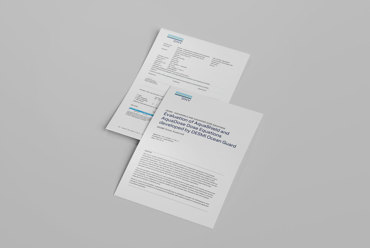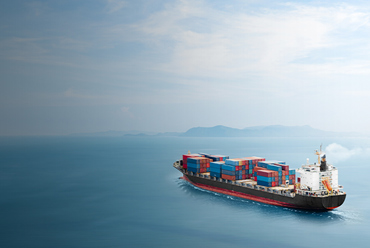
February 2024

February 2014
Now that Energy-saving Systems (ESS) such as DESMI’s OptiSave™, a pump control solution that feeds pumps with just the right amount of energy, have been thoroughly proven, shipowners finally have a cost-effective, simple solution to meet IMO emissions regulations. And everyone is getting on board.
The case for compliance
“It’s the first time we can confidently state that complying with new IMO rules actually makes money for shipowners,” says DESMI. “And we’re having to work hard to keep up with the demand.”
The regulations he’s referring to require the world fleet to reduce its CO2 emissions by 180 million tons by 2020. On average, that’s around 110 tons less fuel oil used per vessel per annum. Added to this is the requirement that vessels operating within 200 miles of the shore must use costly low-sulphur fuel. And the solution that turns these demands into a money-making opportunity for shipowners is DESMI’s OptiSaveTM – the first system on the market to save energy by matching pump activity to external conditions. Within a period as short as 12 months, vessels equipped with OptiSaveTM can repay their initial investment and be returning thousands of dollars in annual savings.
New savings on board
Four years ago, Danish pump manufacturer DESMI set out to create a new way of saving energy on board both large and small vessels. The idea was to design a modular solution that could regulate pump activity such that only the necessary level of energy for the conditions was used at any time – neither too much, nor too little. DESMI’s engineers estimated that, if the solution really worked, shipowners could save enough energy to meet the IMO’s new emission reduction regulations. Happily, the results lived up to the company’s expectations, and delivered additional benefits for shipowners besides.
OptiSaveTM automatically saves energy for pumps driving sea water or fresh water cooling systems, or powering engine room ventilation systems. Available in newbuild and retrofit configurations, the solution monitors a variety of parameters, including sea water outlet temperature, pressure drop across coolers, and electric motor heat levels, adjusting pump activity accordingly. It also increases flow to reduce sediment buildup within the coolers.

The right product at the right time
“Back in 2009, we were the only ones in this market,” says DESMI. “The technology was new and, consequently, orders were few and far between. But things are very different now. Shipowners are feeling the squeeze of the new regulations and they’ve been searching for cost-effective ways to comply. Like any fast-growing market, competitors have joined us, helping to raise awareness and establish Energy Saving Systems (ESS) as a new solution category.”
Competitive advantages
With years of pioneering experience in this comparatively new market, DESMI’s solution stands out in three major ways. First, safety is designed into the system from the start: “We’ve put it all together in a way that doesn’t require crew to change their normal operating patterns – they can continue just the way they’re used to working,” says DESMI. “So we’re sure OptiSaveTM won’t interfere with the vessel’s normal safety setup, and requires only minimal modification of existing installations.”
Second, the retrofit version of the solution is focused on achieving the cheapest possible cost of installation. In fact, it’s remarkably straightforward. “We got a call from the fishery patrol vessel Vestkysten the other day. He said: ‘You were right – installing this was just like plug-and-play!’”
Last but certainly not least, OptiSaveTM’s design team has maintained its mission to deliver the market’s highest energy savings percentage.
DESMI is now positioning OptiSaveTM to be a key component of shipowners’ strategy in a world that is continually tightening its environmental belt. For chartering companies, solutions such as OptiSave offer new upsides, too. Going forward, charter customers will place greater importance on the vessel’s EEDI (Energy Efficiency Design Index) as a buying parameter. By installing OptiSaveTM or other ESS solutions, charter companies can make their vessels more efficient and thus more attractive to the charter market.
Customers on the move
During its development, OptiSaveTM proved its worth – and reliability – on multiple vessels, including five operated by Danish liquified gas transporter Lauritsen Kosan. All five Lauritsen Kosan vessels met projected savings levels, achieving cost reductions of some EUR 40,000 per vessel per annum. Recent arrivals include the Danish fisheries control and the national coastguard, and DESMI now claims the market’s longest reference list for such solutions.
With 2020 approaching, DESMI is strongly aware of the need for shipowners to move quickly, especially in relation to newbuilds. But they are confident that OptiSave will be installed by the world’s shipowners in good time.
“We’re getting more and more enquiries and orders every week, from all over the world. Although, with 70,000 vessels around the globe affected by the IMO regulations, we’re still just at the beginnings of a very substantial step-shift. Unlike most regulatory moves however, this one carries a financial benefit for the owners and for the environment. You might say it’s a case of new regulations with a built-in business case.”

February 2024

February 2024

August 2023

August 2023